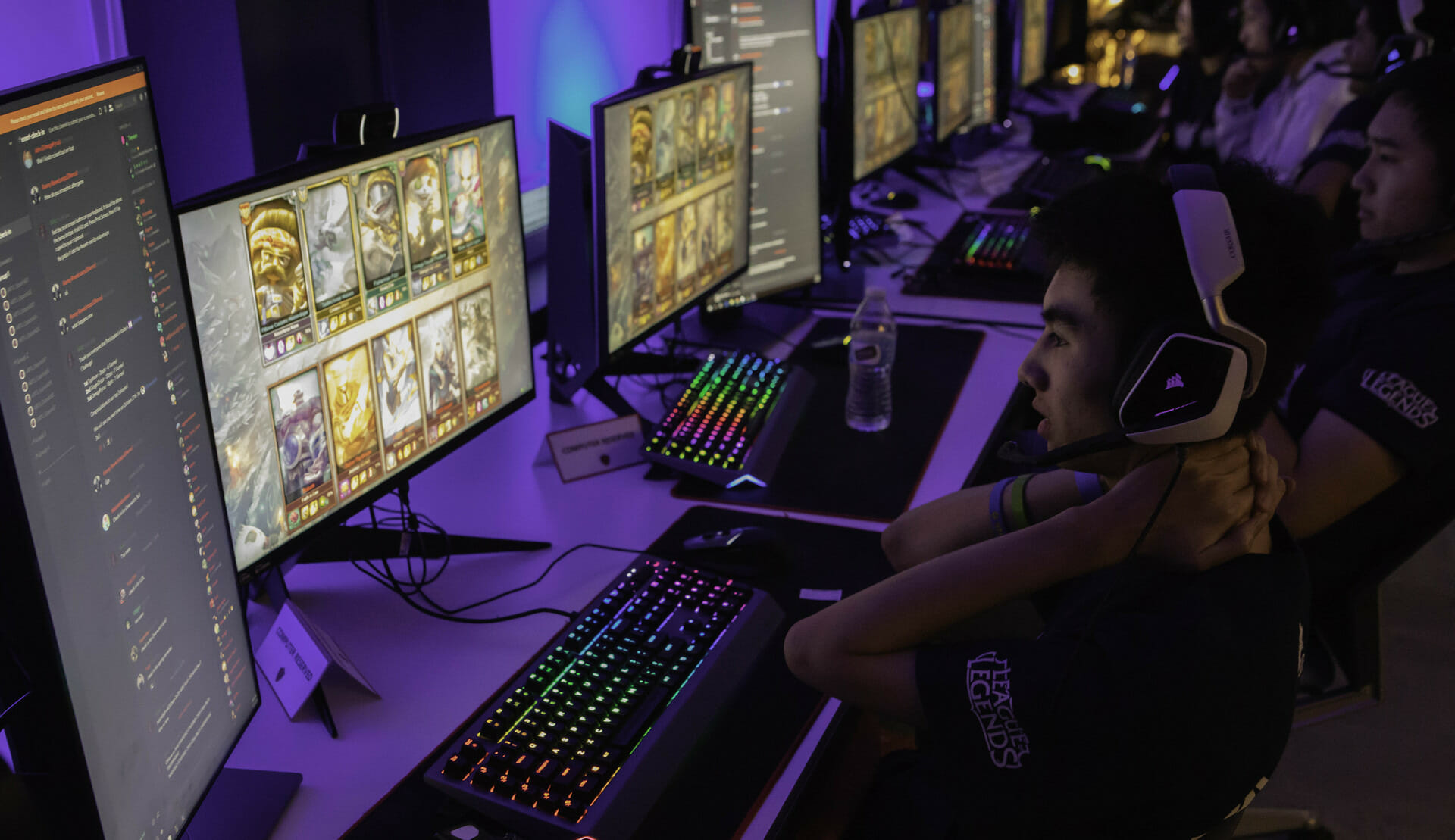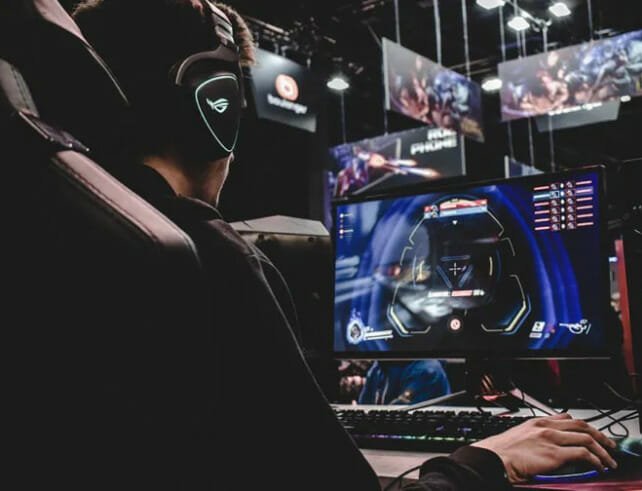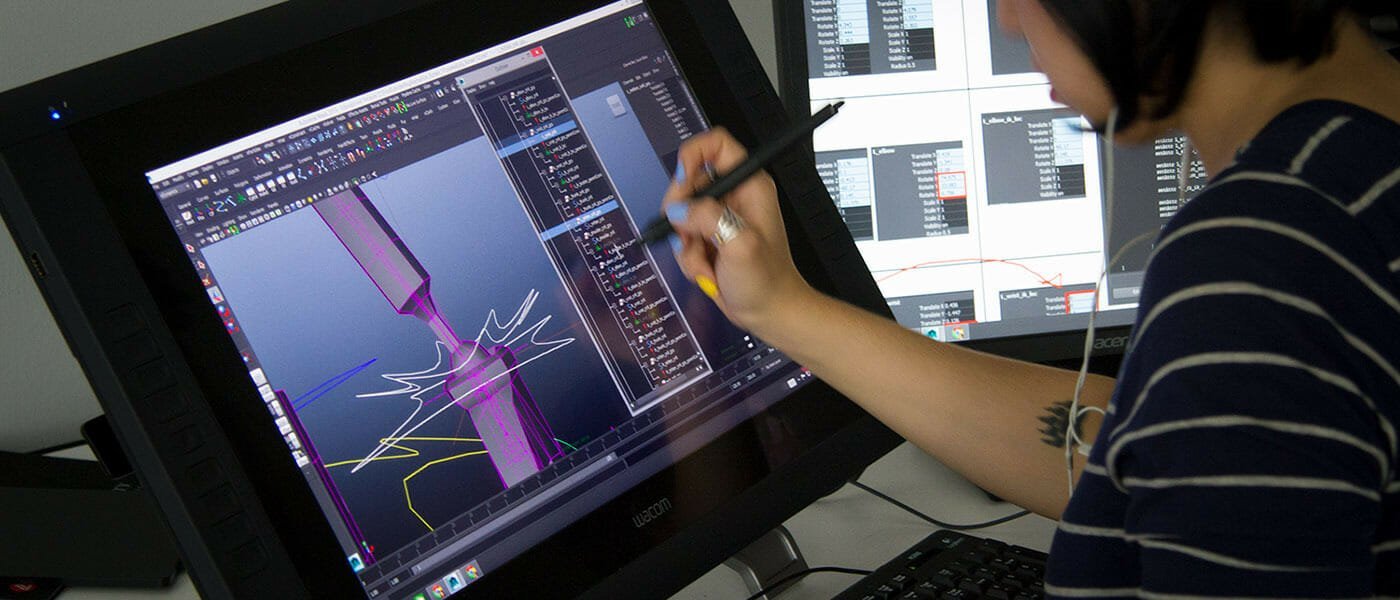
The video game development industry is experiencing rapid growth, becoming one of the most dynamic sectors in the tech world. Fueled by the rise of the internet, this industry is undergoing a significant boom. While traditional software companies face challenges to remain competitive, the video game development sector offers exciting and emerging opportunities for developers.
What is the Gaming Industry?
To put it in a nutshell, games are computer-based entertainment and can be both educational and entertaining. The development of games is an ongoing process, with players creating content by writing codes on their own computers.
Right now, there are several different types of game designs under the banner of computer games: adventure games, puzzle games, card games, simulations and adventure.
On the surface, it doesn’t look like many people are working in the gaming industry. However, it is estimated that there are around a hundred million gamers worldwide. Nearly 70 per cent of all gamers play internet-based games on a monthly basis, and over half of all players play games on the internet.
Perhaps, the gaming industry is a big one.
It’s, therefore, no surprise that this entertainment form is becoming an increasingly popular career choice, with lots of technical and creative roles available for those with a passion for gaming.
To get started, you’ll need to decide what type of game industry job you’re interested in. Here are the three most common roles on offer:
Game Developer (or Game Programmer)

Game developers write the code required to build playable games based on the ideas of game designers. Bringing the creative vision to life requires understanding and following instructions. A lead programmer typically leads a team of developers. Having a solid understanding of game programming languages and specialisation in one or more platforms, such as PCs, mobiles, or consoles, will enable you to progress more quickly.
The areas of programming you could specialise in are AI, audio, controls and interfaces, game physics, and 3D engines.
Game Artist

In the video game industry, a Game Artist usually specialises in both 2D and 3D animation. Game Artists create the world of the game based on design briefs and concept art.
All the elements necessary to make a game look good, from characters to objects to textures to assets, environments to props to vehicles to weapons, are worked on by them.
With game development becoming increasingly sophisticated, many game artists will specialise in one or more of these areas. It also depends on the size of the studio and the scope of the project and how much responsibility the role entails.
They may take on a variety of roles within animation and/or modelling or asset team throughout their career, gaining a deeper understanding of how the process works.
Game Designer
Games are designed by game designers, who also conceptualise levels, environments, and character interactions. The job of these specialists is to communicate ideas with other specialists – such as developers, artists, and others – and to oversee the production of those ideas.
An independent game developer or a commercial game company can employ game designers who specialise in a particular game element. It is even possible for them to develop, create, program, and publish their own games on their own.
Game Development Process
Stage 1. Pre-production in Game Development
Throughout the game creation process, each step is imperative, but the first planning phase has a direct impact on all the subsequent steps. It is essential that you collect technical requirements for a future product before you begin the game development process. As part of the project definition process, managers and product owners map out the core concept behind the project’s goals and business model.
- Analyse the market and competitors. It is important to determine what is currently at peak popularity and brings the most profit to the gaming industry.
- Audience. To advance the development of your game according to the preferences of your target audience, you must identify who will be interested in your product.
- Platform selection. In addition to popularity, the company’s coding abilities are usually taken into account when choosing a platform.
- Resource allocation. Video game development requires specialists, equipment, and a timeline for determining the number of people required and the equipment required for execution.
- Art concept. Artists who work on concept art are responsible for designing characters, environments, props, and other game assets.
- Monetisation method. Are you going to make money from advertisements, in-game purchases, or selling a product for a fixed price?
- Analysing risks. By calculating all potential risks and determining damage mitigation methods in advance, all possible risks are mitigated.
- Marketing strategy. In order to make the game as appealing as possible to as many users as possible, it is necessary to consider how to do this.
The Game Design Document (GDD) is created after all the required information and requirements are collected for a project. In this document, more specific requirements for a game are detailed. They include themes, genres, plots, gameplay types, game mechanics, level designs, and environments.
Stage 2. Production
Several internal stages make up the production stage of a video game production pipeline, which is the longest and most laborious.
- Prototyping. Prototyping consists of playtesting the main game mechanics – the first stage of production. Sweden’s Vasa, built in the 17th century, is a great example of prototyping’s importance. Hundreds of artisans and a vast amount of money went into building it, which resulted in a colossal structure. In spite of this, the ship quickly capsized and sank when it sailed for the first time due to poor design. As this game design stage shows, even the best ideas and expert work need to be put to the test.
- Creation of visual content. Game assets include all the characters, props, environments, and environments that make up the visual content of a game. In terms of time spent on the game, the format of the game (2D/3D) can have a dramatic impact. Since the design of the flat visual content takes sketching, colouring, and animation, 2D games go through the same development pipeline as 3D games, but they require less complex technology and less time. As a result, the process usually takes only a few days to complete. However, how detailed the content is also affects how fast and straightforward the process will be. A 3D game takes more time and effort to create than a 2D game, so the process typically involves several steps, including polygonal modelling, sculpting, texturing, rigging, and animation. The tools and software used by artists are more specialised. A 3D modeller must also possess more skills and knowledge in order to succeed professionally.
- Development of game levels. For each genre of game, specialists develop different logic for the levels during the level design stage. When a player completes a linear quest or explores an open world, the difficulty level may increase. Level designers also develop game mechanics, plots, and game economy designs, as well as helpful details such as hints to explain new mechanics and to guide a player through a game.
- Voice acting and audio design. In immersive game design, audio plays an important role. Different situations require different types of sound effects and soundtracks. A player is also given specific signals regarding danger, victory, and defeat through sound effects. It is also common for natural sounds to be included – a character’s footsteps, a shot or explosion, the sound of water or wind, etc. It is also necessary to voice the characters in addition to the music and sounds. With the help of voice actors, dialogues, monologues, and individual lines of characters are recorded.
- Coding. After all, the components of a game are ready, and developers write thousands of lines of code to tie them all together, often using game engines. It is difficult to create a game with mutually exclusive mechanics, as well as one that functions without errors or failures. All technical factors are taken into account and a positive user experience is created by game developers.
Stage 3. Monitoring and Evaluation of Quality
It is important to test games at any level of complexity to ensure that they work correctly and are bug-free. The reason for this is that even one bug can adversely affect a user’s experience. Hence, functional, nonfunctional, and Alpha and Beta testing are typically conducted.
Once the functionality, performance, compatibility, and other features of the game have been tested and all the bugs have been fixed, the Alpha and Beta stages of the development process will begin. Quality assurance engineers check and fix any last errors in the Alpha testing of a finished game. Beta testing is sometimes followed by user impersonation, which is not done by professionals.
Stage 4. Launch
Everyone looks forward to the product launch as the final phase in the development of a game. In spite of this, the story does not end with the launch. The game development team continues to improve the game even after the launch, as there are always enough errors and flaws. Developers use tester feedback to make important changes as they gather firsthand feedback from real users.
Stage 5. Post-production
In order to ensure a game’s stability and performance, fixes and improvements must be monitored constantly after launch. Platforms and studios should release regular updates to meet their technical requirements.
The game’s in-game content is regularly updated, and new mechanics are often added in order to keep users engaged. It is essential to maintain quality by regularly testing new versions of a game and maintaining constant maintenance.
After knowing how games are developed, you will have a better understanding of how game developers work. Knowing what to expect and what to prepare for is key to success in the job you’re about to try.
How to Get Into Game Development

Fortunately, video game programming doesn’t require a college degree. In addition to these options, there are others. Going to college is not a guarantee that you’ll have an advantage.
There are now more opportunities than ever before for you to learn game development when and how you want. Everyone wants to work in video game development, but there are only so many jobs. While it is not necessary for you to have any formal education, the possibility of having one should not be ruled out.
Game development doesn’t require you to have an entry-level job. Building something simple with YouTube and a game engine can get you started right now.
The purpose of this guide is to provide you with tips, tricks, tools, and the basic knowledge you need to get started. Here are some ways to break into the industry:
Start your Career as a Game Tester
Over the past few years, video games have driven massive growth in the industry. It is an industry that is growing rapidly, in which more and more employees are needed to keep up with the demand.
The job of a Game Tester is the most accessible in the game industry. In what way? Due to the lack of education or specialised training required for most testing jobs, anybody can apply. There are always openings for new testers to fill in the vacancies on the game team because many of the game testers move into different positions on the team.
An Apprenticeship in Gaming
With gaming apprenticeships, you can combine classroom-based learning with on-the-job training to break into this notoriously competitive industry.
For those who want to get started in the game development field, there are apprenticeship programs available. Animators, software development technicians, visual effects artists, and game testers are also available as apprenticeships in gaming.
Apprenticeships in video gaming are often advertised by specialist recruitment companies like Aardvark Swift if you cannot find any opportunities with the major game publishers.
Get a Traditional College Degree
Most game studio job postings say “Bachelor’s Degree required”, – but they don’t specify what kind of Bachelor’s Degree is required. Game-related degrees aren’t always necessary, as long as you’ve learned skills that can be applied to the industry.
Consider all the degrees that could lead to a game design career if you’re sceptical. In the same way, that game designers themselves are diverse, so are the education requirements for game designers.
Earn a Degree in Video Games
Over one million game developers exist around the world, and the industry is booming. Every year, the market for video games grows larger and larger. University degrees in game development are available at many institutions. Degrees alone aren’t enough, however. It requires critical examination and improvement of your own work to craft an experience. Despite becoming very familiar with the level you’re building, you have to play as a new player time and time again.
Find a Job in a Non-game Development Position at a Gaming Studio
In order to run a successful game studio, a variety of jobs are required, and many of those jobs have nothing to do with the actual creation of the game. In addition to video game development jobs, you might be able to find non-development jobs, such as IT, tools development, or support positions at game studios.
Focus on the larger game studios if you wish to pursue this strategy since smaller game studios do not have as many support staff. Your chances of finding support jobs increase as the studio grows.
Become a Game Blogger
A good way to get started is to just start if you want to write about games or run a gaming community. You will be able to learn more about the gaming industry as you gain experience through a gaming blog as you begin your career in game development. You will become familiar with the gaming industry by reading gaming blogs showcasing game reviews, gaming experiences, and upcoming games to watch.
How to Get a Game Development Job

Putting together a great portfolio of your game design work is the key to success in this section.
Getting hired in the video game development industry depends solely on your portfolio. You will be told you must have a degree or you will not even be considered by some people! However, they are just trying to scare you because they are afraid that no one will be able to get into college of their own free will.
Having an impressive portfolio is more important than having a fantastic resume in most cases.
It is not uncommon for people without college degrees to get into the video game programming industry. What makes you think you can’t do it? Portfolios are the only criteria for hiring at some companies. Portfolios are great opportunities for you to show them what you are capable of, and they want to know what you can do. With so many college graduates applying for jobs, what will help you stand out? What makes you different? Would it be your position on the student council or your hockey championship?
Not at all. Ultimately, it’s your portfolio. You need to spend time on it! Spending a little more time on your portfolio can help separate you from the 70% of applicants who don’t put enough effort into it.
Conclusion
The ever-growing industry of game development brings endless opportunities. If you are a gaming nerd who is very passionate about games, then this might be your dream job. Why not give it a try?
“How to get into game development?” must be a common question for those of you who are thinking about turning your gaming hobby into a career. Don’t hesitate anymore and dive into the gaming industry now. Who knows, your game might be the next big thing!
FAQs
Where can I start learning game development?
If you are a beginner, you might start by choosing the suitable game development language for you. There are tons of tutorials and blogs on the web that can help you identify your chosen gaming language. Once you’ve found it, you may start learning it on the internet as well. Just search for crash courses online. Remember, the internet is a free university!
What to study to create games?
An undergraduate degree in graphic design, multimedia design, or a related field is usually required of video game designers. University programs specifically focused on video game design are available at some institutions. Programming languages, computer design, and animation courses are commonly covered in computer science courses. However, you can still get a job in game development without a degree. You can learn game development languages online through crash courses or other forms of informal education. You can even self-study this!
What language are games coded in?
Game engines are the development environments where game programmers create and host interactive worlds. C++ is one of the most popular programming languages for creating them. In addition to graphics, physics, and sound, game engines provide the technology for the behaviour of robots powered by artificial intelligence. Other game development languages include Java, JavaScript, C#, Python, HTML5, and more.
Is C++ hard to learn?
There is no doubt that C++ is one of the most difficult programming languages to learn compared to other popular programming languages like Python and Java. The multi-paradigm nature of C++ and its advanced features make it hard to learn. It is also one of the most misunderstood programming languages by many people in the industry due to this reason. Actually, it is not difficult to start learning C++. However, over the years, as you experience C++, you will find that it is one of the most enjoyable programming languages to code in for a non-programmer.






